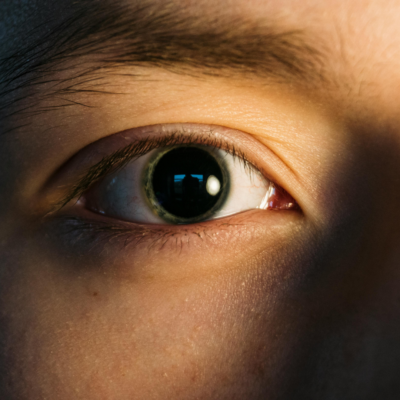Recognizing the Signs of Meth Addiction: A Comprehensive Guide

Recognizing the Signs of Meth Addiction: A Comprehensive Guide
Introduction
Methamphetamine, commonly known as meth, is a potent and highly addictive central nervous system stimulant. It has devastating effects on both the mind and body, leading to a rapid decline in physical and mental health. Meth addiction can be particularly insidious because its signs often escalate quickly, making early detection crucial for intervention and treatment. This article will explore the physical, psychological, and behavioral signs of meth addiction to help identify this dangerous condition.
Physical Signs of Meth Addiction
The physical toll of methamphetamine use is often one of the most visible indicators of addiction. Meth affects nearly every part of the body, and these effects can manifest in various ways:
- Rapid Weight Loss: One of the most common signs of meth addiction is extreme weight loss. Meth suppresses appetite, and users often neglect proper nutrition, leading to a gaunt, emaciated appearance.
- Dental Problems (“Meth Mouth”): Meth use causes severe dental issues, often referred to as “meth mouth.” This includes tooth decay, gum disease, and tooth loss. The drug causes dry mouth, teeth grinding, and poor oral hygiene, contributing to this condition.
- Skin Sores and Lesions: Chronic meth users often develop skin sores, sometimes caused by obsessive picking at the skin due to hallucinations or feelings of insects crawling under the skin (formication). The drug also reduces blood flow to the skin, leading to poor healing and infections.
- Hyperactivity and Fidgeting: Meth is a stimulant, and users may exhibit signs of hyperactivity, restlessness, and constant movement. This can include repetitive motions, nervous tics, or uncontrollable fidgeting.
- Dilated Pupils and Eye Twitching: Meth causes the pupils to dilate, and users may also experience rapid, involuntary eye movements or twitching, known as nystagmus.
- Premature Aging: Meth accelerates the aging process, leading to wrinkles, sagging skin, and a generally haggard appearance. This premature aging is often due to poor nutrition, lack of sleep, and the toxic effects of the drug on the body.
- Frequent Nosebleeds and Respiratory Issues: Smoking or snorting meth can damage the nasal passages and respiratory system, leading to frequent nosebleeds, chronic cough, and other breathing problems.
- Increased Heart Rate and High Blood Pressure: Meth stimulates the cardiovascular system, resulting in an elevated heart rate and blood pressure. Over time, this can lead to serious cardiovascular complications.
Psychological Signs of Meth Addiction
Methamphetamine use has profound effects on the brain, leading to a range of psychological symptoms that can be both alarming and destructive:
- Intense Euphoria Followed by Depression: Meth use initially causes a powerful rush of euphoria due to the release of dopamine. However, as the effects wear off, users often experience severe depression, anxiety, and irritability.
- Paranoia and Delusions: Meth can cause extreme paranoia, often leading to irrational beliefs or delusions. Users may believe they are being watched, followed, or targeted by others, even without any evidence.
- Hallucinations: Meth users may experience auditory or visual hallucinations, where they hear or see things that aren’t there. These hallucinations can be terrifying and contribute to erratic or dangerous behavior.
- Aggressive and Violent Behavior: Meth increases aggression and can lead to violent outbursts. Users may become hostile or unpredictable, especially when confronted or during withdrawal.
- Insomnia and Sleep Disturbances: Meth stimulates the central nervous system, making it difficult for users to sleep. Chronic insomnia is common, and users may stay awake for several days at a time, leading to exhaustion and cognitive impairment.
- Obsessive Behaviors: Meth users may become fixated on certain tasks or activities, often repeating the same actions over and over. This can include obsessive cleaning, organizing, or other repetitive behaviors.
- Cognitive Impairment: Long-term meth use can lead to significant cognitive decline, including memory loss, difficulty concentrating, and impaired decision-making abilities.
Behavioral Signs of Meth Addiction
Behavioral changes are often the first signs that loved ones notice when someone is struggling with meth addiction. These changes can disrupt relationships, work, and daily life:
- Social Isolation: Meth users often withdraw from family, friends, and social activities they once enjoyed. They may isolate themselves to hide their drug use or because of paranoia and distrust of others.
- Neglect of Responsibilities: Meth addiction can lead to a neglect of personal and professional responsibilities. Users may miss work, ignore household chores, or fail to care for their children.
- Risky Behaviors: Meth lowers inhibitions and impairs judgment, leading to risky behaviors such as unprotected sex, criminal activity, or dangerous driving. These behaviors increase the risk of legal issues, sexually transmitted infections, and accidents.
- Financial Problems: Supporting a meth habit can be expensive, leading to financial difficulties. Users may spend large amounts of money on the drug, leading to debt, selling personal belongings, or engaging in illegal activities to fund their addiction.
- Lying and Secretive Behavior: To conceal their drug use, meth addicts often lie to loved ones about their whereabouts, activities, and finances. They may also become secretive, hiding drug paraphernalia or avoiding questions about their behavior.
- Sudden Changes in Friendships: Meth users often change their social circle, gravitating towards others who use the drug. They may distance themselves from friends who don’t use meth or who disapprove of their behavior.
- Legal Problems: The risky and illegal activities associated with meth use often lead to legal troubles, including arrests for drug possession, theft, or violent crimes.
- Physical Neglect: Personal hygiene and appearance often deteriorate as meth use takes priority over self-care. Users may neglect bathing, grooming, and wearing clean clothes.
Conclusion: Finding Hope in Recovery
Meth addiction is a complex and devastating condition that affects every aspect of a person’s life. Recognizing the signs of meth addiction—whether they are physical, psychological, or behavioral—is crucial for early intervention and treatment. However, it’s important to remember that despite the grim realities of addiction, there is hope.
Rehabilitation programs offer a pathway to recovery, providing the medical care, counseling, and support necessary to overcome meth addiction. With professional help, individuals can rebuild their lives, restore their health, and reconnect with their loved ones. Recovery is a challenging journey, but with determination and the right resources, it is entirely possible. If you or someone you know is struggling with meth addiction, don’t hesitate to seek help. A brighter, drug-free future is within reach.




